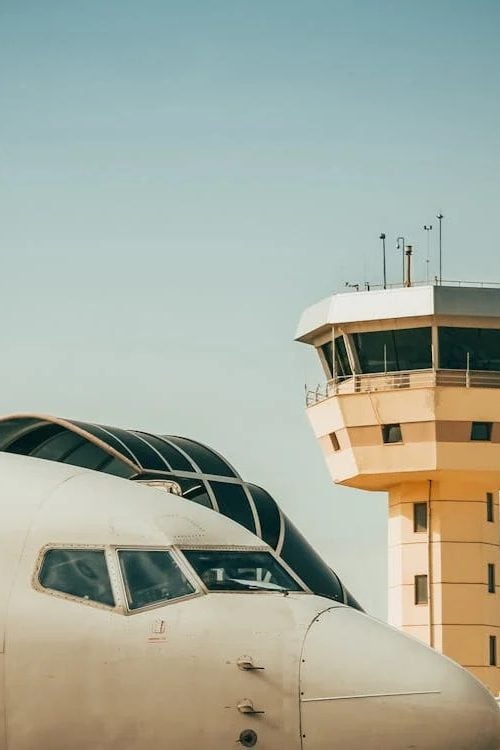The world of aviation relies heavily on specialised fuels to power its diverse range of aircraft. Primarily, there are two categories of aviation fuel: Jet Fuel Types and Aviation Gasoline. Each type caters to different engines and flight requirements, ensuring safety, efficiency, and reliability in the skies.
At Flightworx, we have an expert aviation fuel solutions team to help you with uplifts no matter where you are in the world. In fact, we provide access to a network of over a hundred different aircraft fuel suppliers and we can provide free quotations for you at any time.
Whether you are looking for zero-rated fuel or jet fuel management which makes your flying more cost-efficient, we can assist.
As experts in aviation fuel services, we understand the importance of detailed knowledge about various fuels. That’s why we’ve compiled this informative article, complete with specifications and characteristics of different aviation fuel types, to assist in your understanding and decision-making process.
Understanding What Fuel Types Are Used In The Aviation Industry
Jet A1 is the most common type of jet fuel for commercial and international flights, especially in Europe and the rest of the world outside the USA.
Jet A1 aviation fuel is straw-coloured. It is based on unleaded kerosene, a clear liquid with a low viscosity.
Jet A1 fuel has a freezing point of −47 °C which means it is superior than other jet fuel types available and is suitable for flying at high altitudes and in extremely cold temperatures. In addition, Jet A1 fuel has an anti-static additive to prevent electrical discharge during refuelling which means it is considered to be one of the safest fuel types around.
Jet A Fuel
Although it has been around since the 1950s, Jet A fuel is usually only available in North America since it complies with a US standard. Toronto Pearson International Airport (CYYZ/YYZ) is one of the few airports outside of the United States where you can uplift with this fuel type.
Jet A fuel is similar to Jet A1 but with a slightly higher freezing point. The freezing point of Jet A fuel is typically around -40 °C. This is slightly higher than that of Jet A1 fuel, which has a freezing point of -47 °C. It’s tailored for regions where extreme cold is less of a concern. Jet A fuel has an inferior open-air burn temperature of only 1,030 °C compared with 2,230 °C for Jet A1 fuel. Both fuel types must comply with ASTM specification D1655.
Jet A is a kerosene-grade aviation fuel type, offering a balance of performance and safety, particularly in terms of its high flash point, similar to the Jet A1 fuel.
Jet B Fuel
Based on naphtha-kerosene, Jet B fuel was developed for improved performance in aircraft that are flying in extremely cold conditions. Aircraft ground handling operators tend to offer it in places like Northern Canada and Alaska only.
It is more volatile than both Jet A1 fuel and Jet A fuel, although this is not a serious problem when the local temperature is low. Jet B fuel has the lowest freezing point of all at −60 °C.
This fuel is a mixture of gasoline and kerosene, making it ideal for very cold environments, often utilised in military or certain civilian aircraft in cold climates.
TS1 Fuel
Only available in Russia and some other former soviet states, TS1 is a jet fuel type that complies with the Russian standard GOST 10227. In common with Jet B fuel, it is designed for use in Arctic conditions.
For this reason, it was developed to have a freezing point that is below −50 °C. Its flash point is also lower than Jet A1 and Jet A fuel at 28 °C.
TS1 is adapted to the specific requirements of Russian-made aircraft, both in civilian and military sectors.
100LL Avgas
Avgas stands for aviation gasoline although it is still sometimes referred to as aviation spirit in the UK. There are many different grades of Avgas but 1100LL is by far the most common type. 100LL (Low Lead) Avgas is an aviation petrol used in piston-engine aircraft.
Avgas is distinguished from car petrol because it still includes a compound called tetraethyllead, an additive which is put in to help prevent engine knocking. The 100LL grade of Avgas limits the amount of tetraethyllead that may be added.
Although it still contains lead, it’s at a lower level than previous Avgas types. This aeroplane fuel type is essential for small, general aviation aircraft, providing the high-octane performance required by piston engines.
Sustainable Aviation Fuels
Sustainable aviation fuels (SAFs) are a promising development, offering a greener alternative to traditional fossil-based aviation fuels. Made from renewable resources like biomass, SAFs can significantly reduce aviation’s carbon footprint. They are designed to be ‘drop-in’ fuels, compatible with existing aircraft engines and refuelling infrastructure, making them a practical and eco-friendly option for the future of aviation.
In conclusion, the variety of aviation fuels reflects the diverse requirements of the aviation industry. From the widely used Jet A1 to the specialised TS1, each fuel is tailored to specific aircraft and environmental conditions. The advent of sustainable aviation fuels heralds a new era, balancing the demands of air travel with the urgent need for environmental sustainability.
Are you seeking a reliable aviation fuel supplier?
Access the Flightworx Fuel Portal today and discover a world of cost-effective and efficient aviation fuel solutions!
Benefits:
- Compare fuel prices from a vast network of providers
- Secure the best deals for your flights
- Streamline your fuel procurement process
- Enjoy hassle-free fuel management
- Embrace a smarter approach to aviation fuel with Flightworx!
Click here to learn more
CONTACT OUR TEAM TODAY
Unsure about what aviation fuel is best suited for your journey or looking for a new aviation fuel supplier? Get in contact with our team today and find out how Flightworx can help you with flight planning and aviation fuel supply.




